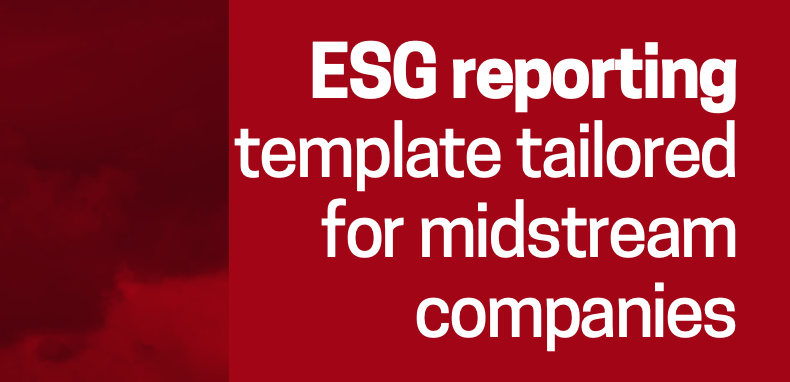When it comes to ESG reporting, one size does not fit all. Gas marketers delivering into Mexico reported 516 transactions in January and February versus 611 for the same two months of 2020, right before the first coronavirus case was reported in the country. This is according to data available from energy regulator CRE.
JOEL MOXLEY – GPA MIDSTREAM ASSOCIATION
By Joel Moxley – CEO, GPA Midstream Association
That fact led GPA Midstream to join forces with the Energy Infrastructure Council (EIC) to create a template for reporting environmental, social, and governance data. It was a year-long process to ensure the template would provide transparency and relevance to all midstream stakeholders.
The industry looked to what data was most material to collect from firms in midstream, which is a diverse sector. For example, an ESG report by a tech company such as Google or Facebook would look different from a manufacturer. Even within the energy industry, relevant ESG data sets would look different for a midstream company than they would for a producer or refiner.
In addition, midstream companies represent a lot of operational diversity … some focus primarily on natural gas, some concentrate on crude oil, and some provide services along the full value stream from the wellhead to markets. Likewise, large and small companies have different reporting needs.
Recommended Article: LNG and energy transition: bridging the gap to a low-carbon reality
The template, released in December, allows all stakeholders (investors, rating agencies, customers, employees, et al) to see a consistent set of ESG metrics for midstream companies. GPA Midstream and EIC have significant overlap in our respective memberships, and each organization brought special expertise to the process, including EIC tapping member financial firms for their knowledge. We are celebrating GPA Mid- stream’s 100th anniversary this year, and that history brought to the table a vast depository of long-term technical expertise.
The development of the template was a collaborative process that balanced input from financial institutions that are using ESG data to evaluate companies’ performance with midstream companies’ detailed knowledge of the data that was relevant to provide an overview of their operations. It’s a midstream ESG template developed by midstream experts, which sets it apart from other reporting platforms created by third parties that span the entire energy space.
By February of this year, several of our member companies had completed their early adoption of the ESG template, including Crest- wood, Enterprise Products, ONEOK, Western Midstream, and Williams. Following soon after were DCP Midstream, Energy Transfer, and Plains All American.
The leadership of these early adopters will ensure widespread use of the tool as a standard for transparency and disclosure.
The quantitative and comparable metrics for the midstream industry will prove useful for stakeholders, policymakers, and rating agencies in the future. The U.S. Securities and Exchange Commission (SEC) recently requested comments regarding increased climate disclosures for public companies. Both PA Midstream and EIC were able to point out the template as an example of the midstream industry leading the way in this important area.
While there is a lot of focus on the environmental and social parts of the reporting for investors and regulators, the governance piece of the ESG journey is equally important, especially to employees and prospective hires. Employees want to know there is an inclusive workforce and boardroom in the companies they are going to work for.
Version 1.0 of the template includes data gathered from 2020 and asks for 2019 and 2018 information for comparison. Version 2.0 is in the works now as member companies progress on the ESG journey. Additional versions are highly likely in the coming years as things evolve in that space. For example, climate disclosures are a relatively new field, and companies are developing expertise in that area.
There are certain to be additions and subtractions in the future because we acknowledge that this is an ongoing process. Our ultimate goal is to ensure that this template remains the primary midstream ESG reporting channel and remains relevant to all stakeholders, so we’ll continue to make this a priority.


